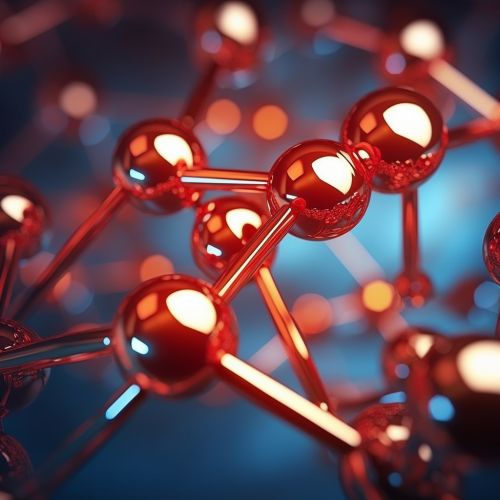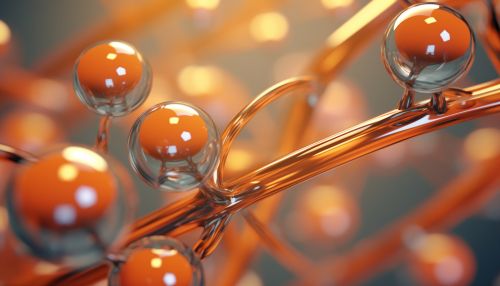Fatty acid
Overview
Fatty acids are carboxylic acids with long aliphatic chains, which can be either saturated or unsaturated. They are a key component of the lipids that make up cell membranes and play a crucial role in the body's metabolic processes. Fatty acids are primarily used for energy in the body, but they also have other functions, such as acting as signaling molecules and as components of cell membranes.


Structure
Fatty acids consist of a carboxylic acid (-COOH) group on one end of a carbon chain and a methyl group (-CH3) on the other end. The carbon chain can vary in length, typically ranging from 4 to 28 carbons, and can be either straight or branched. The carbon atoms in the chain are connected by single or double bonds, which determine whether the fatty acid is saturated or unsaturated.
Saturated Fatty Acids
Saturated fatty acids have no double bonds between the carbon atoms in their chains. This means that each carbon atom is bonded to the maximum possible number of hydrogen atoms, hence the term "saturated". Examples of saturated fatty acids include palmitic acid and stearic acid.
Unsaturated Fatty Acids
Unsaturated fatty acids, on the other hand, have one or more double bonds in their carbon chains. These double bonds cause a kink in the chain, which affects the fatty acid's physical properties. Unsaturated fatty acids can be further classified into monounsaturated and polyunsaturated fatty acids. Monounsaturated fatty acids have one double bond, while polyunsaturated fatty acids have two or more. Examples of unsaturated fatty acids include oleic acid (a monounsaturated fatty acid) and linoleic acid (a polyunsaturated fatty acid).
Functions
Fatty acids have several functions in the body. They are a major source of energy, as they can be broken down in the mitochondria to produce ATP, the body's main energy currency. Fatty acids are also used to build cell membranes and are involved in cell signaling.
Energy Production
Fatty acids are a crucial source of energy for the body. They are broken down through a process called beta-oxidation, which takes place in the mitochondria. This process produces acetyl-CoA, which can enter the citric acid cycle (also known as the Krebs cycle) to produce ATP.
Cell Membrane Composition
Fatty acids are also a key component of phospholipids, which make up the bulk of cell membranes. The fatty acid chains of the phospholipids form the hydrophobic (water-repelling) interior of the membrane, while the phosphate groups form the hydrophilic (water-attracting) exterior.
Cell Signaling
Fatty acids can also act as signaling molecules. For example, certain types of fatty acids can bind to and activate peroxisome proliferator-activated receptors (PPARs), which are involved in the regulation of lipid metabolism and inflammation.
Dietary Sources and Health Effects
Fatty acids are obtained from the diet and can be synthesized in the body. The type and amount of fatty acids in the diet can have significant effects on health.
Dietary Sources
Fatty acids are found in various types of foods. Saturated fatty acids are typically found in animal products, such as meat and dairy, as well as in some plant oils, like coconut and palm oil. Unsaturated fatty acids are found in plant oils, like olive and canola oil, as well as in fish and nuts.
Health Effects
The type and amount of fatty acids in the diet can have significant effects on health. A diet high in saturated fatty acids has been associated with an increased risk of heart disease, while a diet high in unsaturated fatty acids, particularly omega-3 fatty acids, has been associated with a reduced risk.
